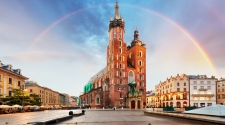Whether you’re on holiday in a distant country, on a staycation in the UK or even upping sticks and moving somewhere new, it’s well worth thinking about how you can explore a new city and discover all the things you need to. Whether you’re looking for hidden gems off the tourist trail or the shops, restaurants and parks that make up your new neighbourhood, exploring is well worth the effort and today we’re looking at how you can do it well.
On Foot
Exploring on foot is the best way to understand how a city connects together, and get to know a neighbourhood in detail. When you’re new in town leave the car on the driveway, eschew taxis and trains and walk! Whether you simply stroll around the streets, choose a distant landmark and set off towards it, or walk home from work instead of your usual commute, you’ll learn more about your city and discover new attractions to return to.
If you want to make the process a bit more structured and fun, try a treasure hunt or scavenger hunt! The modern incarnation of this age old game comes with clues to solve, stories to follow and hints you can call on via SMS. This can be a great perspective on a city that’s new to you, leading you to some less obvious highlights.
Exploring Through History
Local history can be a fascinating window on your new neighbourhood. Reading up on the events, great and small, that have shaped the architecture and culture of the city you’re exploring, and then going to see how that history is reflected in the buildings around you is a great way to not just explore, but understand your new city.
The ‘false houses’ of Leinster Gardens are a great window into London’s history and transport infrastructure. Bristol’s maritime and industrial history can explored in a walk between the old docks (now thick with art museums) and Clifton, where you’ll find the grand houses that industry built.
Art and Literature
Another way to route yourself in a new city is to look at it’s presence in art and literature, and then go looking for the sources of those books and images. London itself is as much a character in Charles Dickens’ works as any of his famous grotesques and the architecture of the city of Dickens’ age still remains to be found. You can still walk the outline of the Marshalsea debtor’s prison that features both in Little Dorrit and in Dicken’s own early life, or drink in the pub he frequented in Limehouse – The Grapes, now owned by Ian Mckellen!
It’s a great way to bring the literary and artistic heritage of a city to life, and place yourself within it, exploring a city in a whole new way.
















